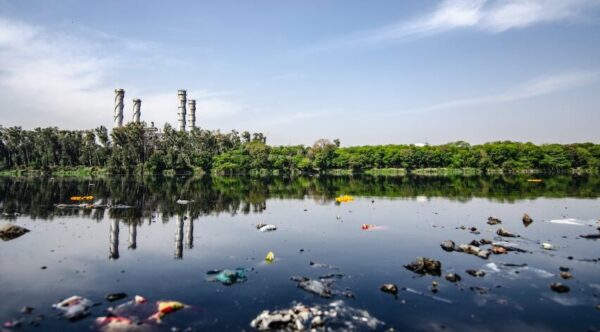Most polluted river in the world
Exploring the World’s Most Polluted River: Causes, Impact, and Solutions
Ganges River
The Ganges River, once revered as a sacred and life-sustaining waterway in India, has tragically earned a notorious reputation as one of the most polluted rivers in the world. Despite its cultural and spiritual significance, the Ganges faces severe contamination due to industrial discharge, untreated sewage, and agricultural runoff. The rampant dumping of toxic chemicals, heavy metals, and human waste has transformed the holy waters into a hazardous cocktail that endangers both aquatic life and the millions of people who rely on the river for their daily needs. The polluted state of the Ganges has led to widespread waterborne diseases and poses a serious threat to the overall ecosystem. Despite numerous governmental initiatives and public awareness campaigns, the challenge of cleaning and restoring the Ganges remains a daunting task, symbolizing the pressing global issue of water pollution and the urgent need for sustainable environmental practices.
Citarum River
The Citarum River, located in West Java, Indonesia, has gained infamy as one of the most polluted rivers in the world. Once a vital water source for communities and ecosystems, the Citarum has fallen victim to extensive industrial and domestic waste dumping, making it a symbol of environmental degradation. The river suffers from the indiscriminate disposal of toxic chemicals, heavy metals, and household garbage, rendering its waters hazardous and unsuitable for human use. The adverse impact on the river’s ecosystem has been devastating, leading to the decline of aquatic life and endangering the health of those living along its banks. Despite international awareness and local efforts to address the issue, the Citarum River remains a stark example of the urgent need for comprehensive and sustained action to combat water pollution and preserve our planet’s vital water resources.
Yellow River
The Yellow River, also known as the Huang He, stands as a poignant example of the devastating consequences of water pollution. Once revered as the cradle of Chinese civilization and a vital source of sustenance for millions, the Yellow River has succumbed to extensive contamination, earning its reputation as one of the most polluted rivers in the world. Industrial discharges, agricultural runoff, and urban waste have collectively contributed to the river’s deteriorating water quality, rendering it unsafe for both aquatic life and human consumption. The once pristine waters have transformed into a murky and toxic environment, jeopardizing the delicate ecological balance and posing significant health risks to the communities that depend on the river for their livelihoods. Urgent and comprehensive measures are imperative to address the pollution plaguing the Yellow River and restore it to a state that befits its historical and cultural significance.
Sarno River
The Sarno River, located in southern Italy, stands as a distressing testament to the global crisis of polluted rivers. Once revered for its historical significance and the lush landscapes it traversed, the Sarno River has succumbed to severe contamination, earning a notorious reputation as one of the most polluted rivers in the world. Industrial discharges, agricultural runoff, and untreated sewage have relentlessly poured into its waters, turning this once-beautiful river into a toxic cesspool. The detrimental impact on aquatic life and the surrounding ecosystems is devastating, with reports of drastically reduced biodiversity and health hazards for both wildlife and human populations residing along its banks. Despite local efforts to address the issue, the Sarno River remains an alarming example of the urgent need for comprehensive environmental protection measures to safeguard our water resources and the delicate balance of ecosystems.
Burigangs River
The Buriganga River, located in Dhaka, Bangladesh, stands as a stark testament to the alarming issue of water pollution on a global scale. Once a lifeline for the city’s economic and social activities, the Buriganga River has sadly transformed into one of the most polluted rivers in the world. Industrial discharges, untreated sewage, and the rampant dumping of solid waste have turned its waters into a toxic cocktail of contaminants. The riverbanks are cluttered with factories that release hazardous chemicals directly into the water, while the absence of proper waste management systems exacerbates the problem. The Buriganga’s water quality has deteriorated to such an extent that it poses serious health risks to the millions of people who depend on it for their daily activities. Efforts to revive and rehabilitate the Buriganga River face significant challenges, highlighting the urgent need for comprehensive environmental policies and sustainable practices to address the widespread issue of river pollution globally
Marilao River
The Marilao River, situated in the Philippines, has earned notoriety as one of the most polluted rivers in the world. Despite its once pristine waters, rapid industrialization and irresponsible waste disposal practices have transformed this once picturesque waterway into a toxic environmental hazard. The river is heavily contaminated with various pollutants, including heavy metals, industrial chemicals, and untreated sewage. The discharge of effluents from numerous factories along its banks has led to severe ecological degradation, endangering aquatic life and impacting the health of communities relying on the river for their water supply. The Marilao River’s unfortunate status reflects the urgent need for sustainable environmental practices and stringent regulations to mitigate the devastating consequences of unchecked industrial pollution on our planet’s water resources.
Mississippi River
The Mississippi River, once a symbol of the pristine beauty of North America’s waterways, has unfortunately become one of the most polluted rivers in the world. The extensive agricultural and industrial activities along its vast watershed have led to significant water contamination, with harmful pollutants such as pesticides, fertilizers, and industrial waste finding their way into the river. The runoff from agricultural fields carries excessive nutrients, leading to harmful algal blooms that deplete oxygen levels and threaten aquatic ecosystems. Additionally, industrial discharges contribute to the river’s contamination, affecting not only the water quality but also the health of the flora and fauna that depend on it. The environmental impact of the Mississippi River’s pollution extends beyond its immediate surroundings, affecting downstream areas and exacerbating the global concern for the health of freshwater ecosystems. Efforts to address and mitigate this pollution are crucial to preserving the ecological integrity of this iconic river and ensuring the well-being of the communities that rely on it.
Jordan River
The Jordan River, once renowned for its historical and religious significance, has unfortunately succumbed to the distressing reality of pollution, earning a place among the most polluted rivers in the world. This iconic waterway, mentioned in religious texts and witness to centuries of cultural and spiritual events, now faces severe environmental challenges. Urbanization, industrial discharges, and agricultural runoff have collectively contributed to the degradation of water quality, transforming the Jordan River into a receptacle for pollutants. The excessive use of water resources, coupled with insufficient waste management practices, has led to the accumulation of toxins and contaminants in its once pristine waters. The adverse impact on aquatic life and the ecosystems surrounding the river has been alarming, underscoring the urgent need for comprehensive conservation efforts to restore the Jordan River to its former state of ecological vitality. The juxtaposition of its sacred history and present environmental plight highlights the global challenge of balancing development with the preservation of invaluable natural resources
Matanza-Riachuelo River
The Matanza-Riachuelo River, located in Argentina, stands as a grim testament to the environmental consequences of industrialization and neglect. Often referred to as one of the most polluted rivers in the world, the Matanza-Riachuelo has been subjected to decades of industrial discharge, untreated sewage, and hazardous waste dumping. The river, once a vital waterway, has become a toxic soup of heavy metals, chemicals, and pollutants, posing severe risks to both aquatic life and human health. The extensive contamination has led to the degradation of ecosystems, the loss of biodiversity, and the emergence of serious health issues for communities residing along its banks. Despite various governmental initiatives to address the pollution, the Matanza-Riachuelo remains an alarming example of the challenges associated with managing and reversing the environmental degradation of water bodies in the wake of rapid industrial expansion.
Yamuna River
The Yamuna River, once revered as a sacred waterway in India, now stands as a stark emblem of the global crisis of polluted rivers. Despite its cultural and historical significance, the Yamuna has become one of the most polluted rivers in the world, bearing the brunt of industrial effluents, untreated sewage, and agricultural runoff. Rampant urbanization and industrialization along its banks have turned the once pristine waters into a toxic cocktail of contaminants. The river, which flows through highly populated regions including Delhi, has witnessed a catastrophic decline in water quality, adversely affecting both aquatic life and the health of the communities dependent on its waters. Despite numerous initiatives and promises to rejuvenate the Yamuna, pollution levels persist, highlighting the pressing need for concerted efforts to address the environmental degradation that plagues this once-revered river.
Yangtze River
The Yangtze River, once revered as the lifeblood of China and the longest river in Asia, now stands as a stark example of the environmental degradation plaguing our planet. Regrettably, the Yangtze has become one of the most polluted rivers in the world, bearing the brunt of rapid industrialization, urbanization, and unchecked waste disposal. The relentless discharge of industrial effluents, agricultural runoff, and domestic sewage into its waters has turned this majestic waterway into a toxic soup, endangering aquatic life and posing serious health risks to the millions of people who depend on the river for their livelihoods. The alarming levels of pollutants, including heavy metals and chemicals, have led to devastating consequences for both the ecosystem and the communities along its banks, underscoring the urgent need for comprehensive environmental policies and sustainable practices to reverse the course of this environmental crisis.
River Nile
The River Nile, historically revered as the lifeblood of ancient civilizations, now grapples with the unfortunate reality of pollution, earning a place among the most polluted rivers in the world. As urbanization and industrialization have expanded along its banks, the Nile faces a barrage of pollutants ranging from industrial waste to agricultural runoff. Effluents containing chemicals, heavy metals, and untreated sewage find their way into the once-pristine waters, posing a severe threat to the ecosystem and the millions of people who depend on the river for their livelihoods. The declining water quality not only endangers aquatic life but also jeopardizes the health of communities relying on the Nile for drinking water and agriculture. Urgent measures are needed to address the escalating pollution crisis and safeguard the future of this historic and vital waterway.




